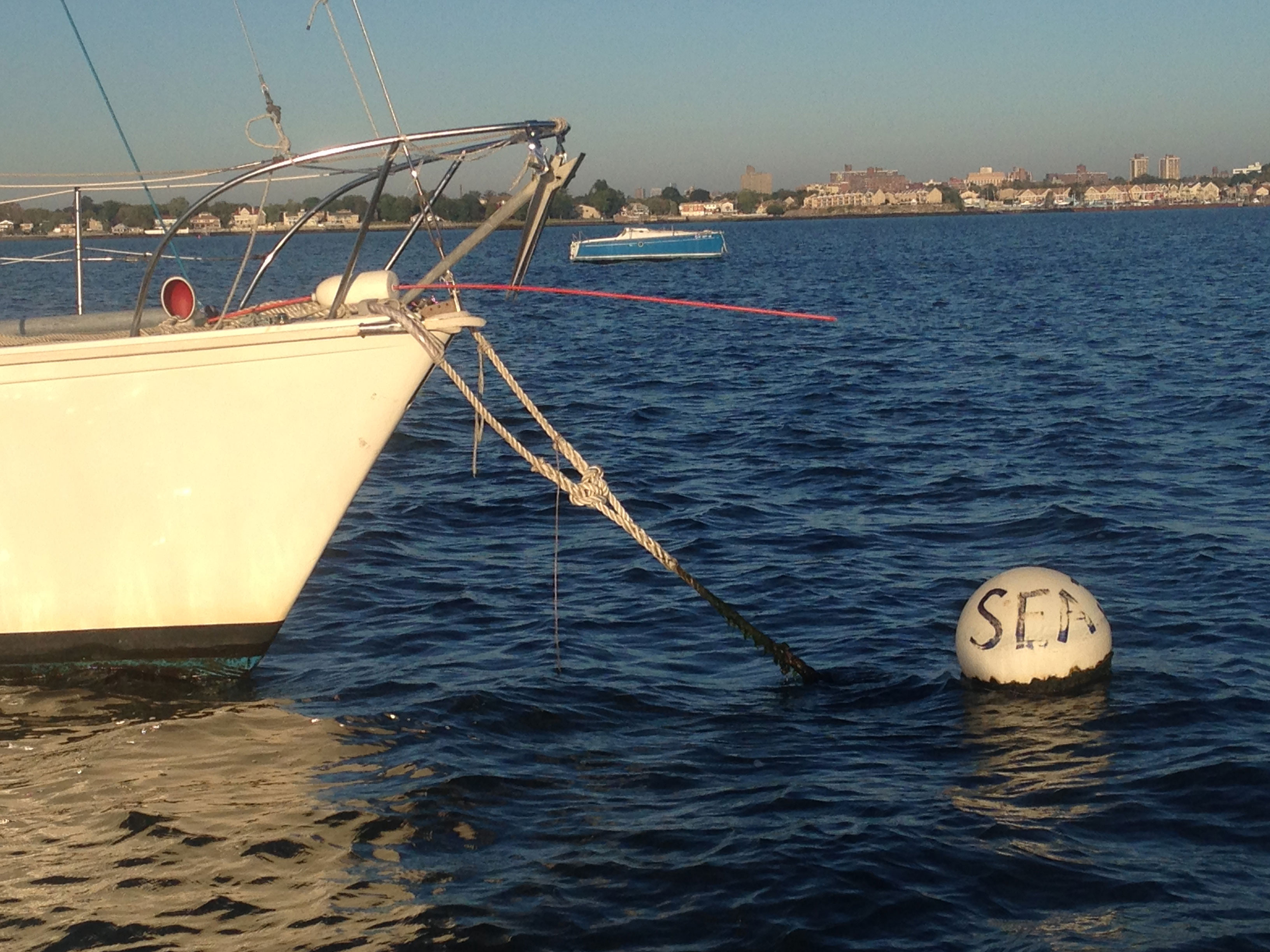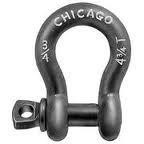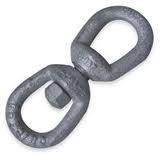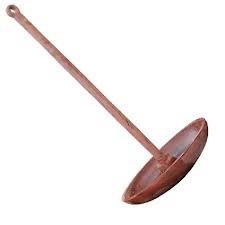Any seasoned sailor will tell you that the key to a good mooring system goes way beyond the weight of your mooring anchor. In fact the most important factors in keeping your boat off of the beach are the weight and scope of your chain.
The Eastchester Bay and its surrounding waters typically range from 10-15 ft. during normal tides. Your mooring system has 50 ft. of chain, top to bottom. When wind/weather conditions dictate that all 50 ft. of your chain gets stretched straight, the entire weight of your vessel is transfered from the chain to your bridles. This is not an ideal situation because the bridles are the weakest part of your mooring system. The cantenary in the chain acts as the shock absorber during bad weather. Cantenary is the combination of your scope and weight (dia.) of chain. Since it is not practical nor cost effective to put endless amounts of chain in your system, we tend to install heavier chain to make up the difference. For example, 50 feet of 5/8″ chain will have more holding power than 50 feet of 1/2″ chain because it takes more force for your boat to stretch the heavier chain than the lighter. Meaning, the heavier chain can withstand higher winds, greater storm surge, etc.
It is based on these principles, and the size/weight/type of your boat, that we can choose the right tackle for your mooring system.

Bridles are the lines measuring 5/8” to 1” or more that attach the boat to your mooring system. There are many different designs for bridles and Two C’s Marine is constantly researching and experimenting with new ways to keep your boat as safe as possible.
We spend much time cutting and splicing our bridles to a standard diameter and length for various boat sizes. A standard bridle is more than adequate for most of the boats in the fleet. However, every vessel rides differently while on the mooring. Since the distance from the cleats to the chocks varies from boat to boat, some adjustments in the overall length of a bridle may need to be made. For example, if the mooring cleat on a vessels bow deck is located near the edge, then a standard bridle is more than adequate. On the other hand, if the bridles are to be fairlead through a chock and the cleat is located a great distance from this fairlead, the bridles may need to be a little bit longer.
Also it should be noted that when it comes to bridles, longer is not always better. It is true that the longer the bridle is, the more shock it can absorb. However, the longer the bridle means that there is more of it that can get wrapped around the chain when the tide changes, which causes the bridle to chaff. Typically, the standard bridle is long enough to provide a safe amount of shock absorption while reducing the chances of the line wrapping around the chain.

Device that floats your chain when your vessel is not hooked up to the mooring. It also acts as a grid marker for your location in the fleet. Mooring balls come in various shapes and sizes from soft rubber, similar to a fender, to hard plastic which is more durable.

We carry shackles ranging from 5/16" to 1" in diameter. These screw pin type shackles are used to connect two or more pieces of hardware together.

Tall boys are attached to your bridles with a short piece of light line. They are used to aid grabbing the bridles out of the water without the use of a boat hook.

Pear-shaped ring measuring 5/8" to 1" in diameter. Bridles are "choked" onto the ring and then the ring is shackled onto the last link of the top chain.

Measuring between 20-25 ft. in length and 1/2"-5/8" in diameter. The top chain is the hardware that connects from your bridles down to the swivel. The top chain rarely sits in the mud and as a result corrodes at a much faster rate than your bottom chain.

Measuring 5/8" to 1" in diameter, the swivel is the hardware that connects your top and bottom chain. The swivel helps take out the twists in the chain as your boat swings with the wind and tide over time. It reduces the risk of your bottom chain tangling around the stem of the mushroom, which decreases scope, and ulimately the holding power of your system.

Measuring 25 ft. in length and 1/2" to over 1" in diameter, the bottom chain is the lifeblood of the mooring system. This chain shackles from the swivel directly to the mushroom anchor. It is equal to, or heavier, in diameter to that of your top chain. This chain is the main shock absorber that keeps strain off of your bridles and helps prevent chafing and parting of bridles. Under normal wind and tide conditions, your bottom chain will lay in the mud, and as a result not corrode as quickly as your top chain.

Mushroom shaped anchor weighing in from 50lbs- 1000+lbs. The mushroom anchor is designed to dig into the soft mud of our area. It provides unmatched holding power compared to other anchor styles.